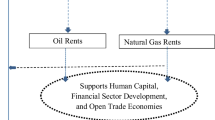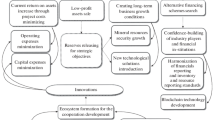
Overview
- Analyses innovation from a historical perspective in Norway
- Norway is one of the richest countries in the world based on natural resources
- Suggests that natural resource intensive industries in high-income economies have been highly knowledge intensive, dynamic and innovative
- Relevant to courses in economic history, economic geography, innovation studies and innovation economics, science and technology studies, development economics and development studies
Part of the book series: Palgrave Studies in Economic History (PEHS)
Access this book
Tax calculation will be finalised at checkout
Other ways to access
About this book
This book rejects the idea that natural resource industries are doomed to slow growth. Rather, it examines the case of Norway to demonstrate that such industries can prove highly innovative and dynamic.
Here, the case is compellingly made that a key empirical problem with the popular ‘resource curse’ argument is that some of the richest countries in the world – namely Norway, Sweden, Canada and Australia – have all developed fast-growing economies based on natural resources. Analysis of innovation and knowledge development in natural resource industries reveal important new insights about the role of learning and innovation. These insights are key to understanding variances in growth levels between natural resource-based economies.
Ranestad illustrates how Norway’s high economic performance is built on knowledge-based natural resource industries. While Norwegian industries may have originated because of foreign technology and expertise, they thriveddue to further developments carried out by organisations within Norway. Ranestad looks at how these developments were possible due to the country’s high level of human capital, capacity for knowledge absorption and ability to adapt to new global technological and economic circumstances.
Similar content being viewed by others
Keywords
- Economic Geography
- Economic performance
- Economic development
- Metals extraction
- Mineral extraction
- Natural resource intensive economies
- Geology
- Chile
- Nigeria
- Venezuela
- Scandinavia
- Technological development
- Smelting techniques
- Engineering History
- Geological mapping
- Knowledge-based growth
- Norwegian mining
- The Capital Goods Industry
- GDP in Norway
Table of contents (8 chapters)
-
Front Matter
-
Theoretical and Historiographical Framework
-
Front Matter
-
-
Part II
-
Front Matter
-
-
Conclusion
-
Front Matter
-
-
Back Matter
Authors and Affiliations
About the author
Bibliographic Information
Book Title: Knowledge-Based Growth in Natural Resource Intensive Economies
Book Subtitle: Mining, Knowledge Development and Innovation in Norway 1860–1940
Authors: Kristin Ranestad
Series Title: Palgrave Studies in Economic History
DOI: https://doi.org/10.1007/978-3-319-96412-6
Publisher: Palgrave Macmillan Cham
eBook Packages: Economics and Finance, Economics and Finance (R0)
Copyright Information: The Editor(s) (if applicable) and The Author(s) 2018
Hardcover ISBN: 978-3-319-96411-9Published: 16 November 2018
Softcover ISBN: 978-3-030-40454-3Published: 20 February 2020
eBook ISBN: 978-3-319-96412-6Published: 07 November 2018
Series ISSN: 2662-6497
Series E-ISSN: 2662-6500
Edition Number: 1
Number of Pages: XIV, 285
Number of Illustrations: 6 b/w illustrations, 7 illustrations in colour
Topics: Economic History, Economic Geography, Innovation/Technology Management, Natural Resource and Energy Economics, Economic Growth, Development Economics



